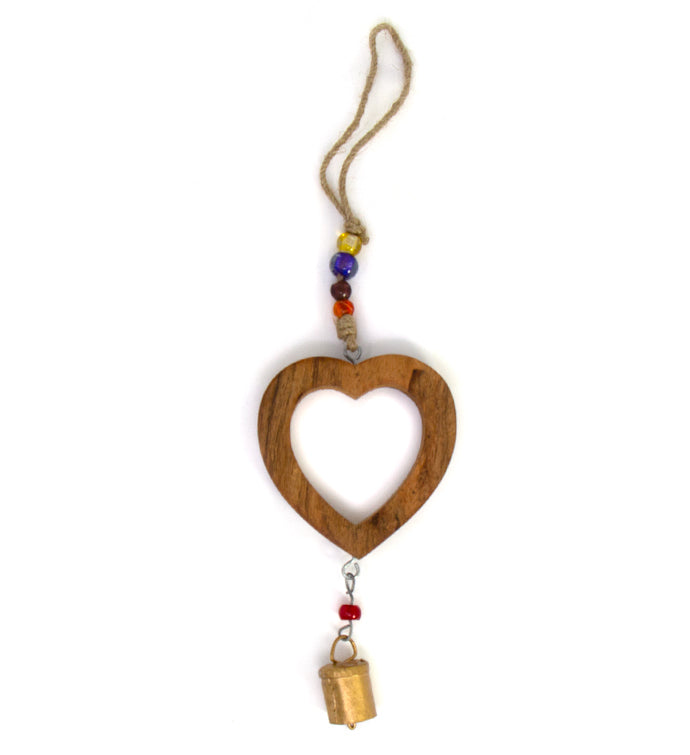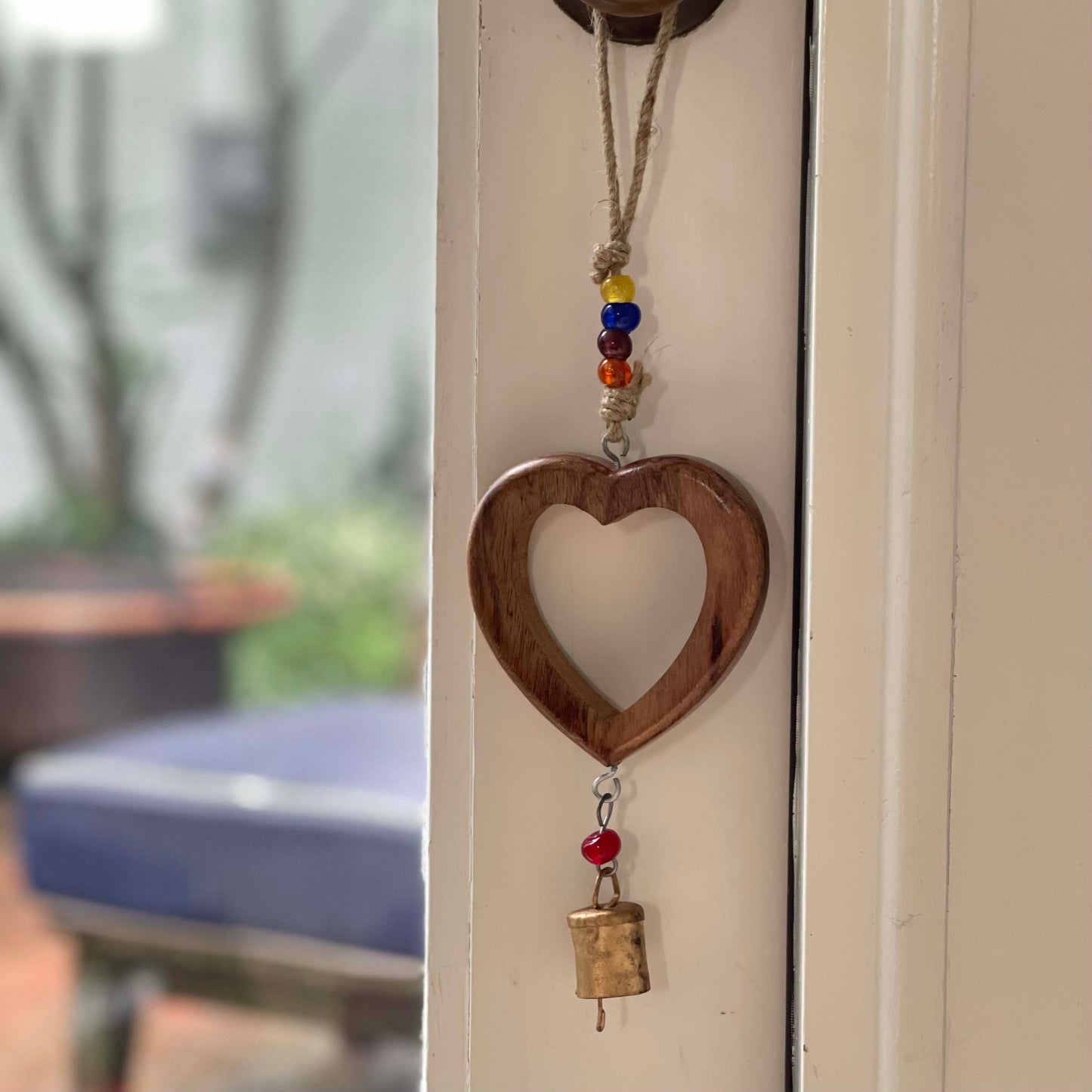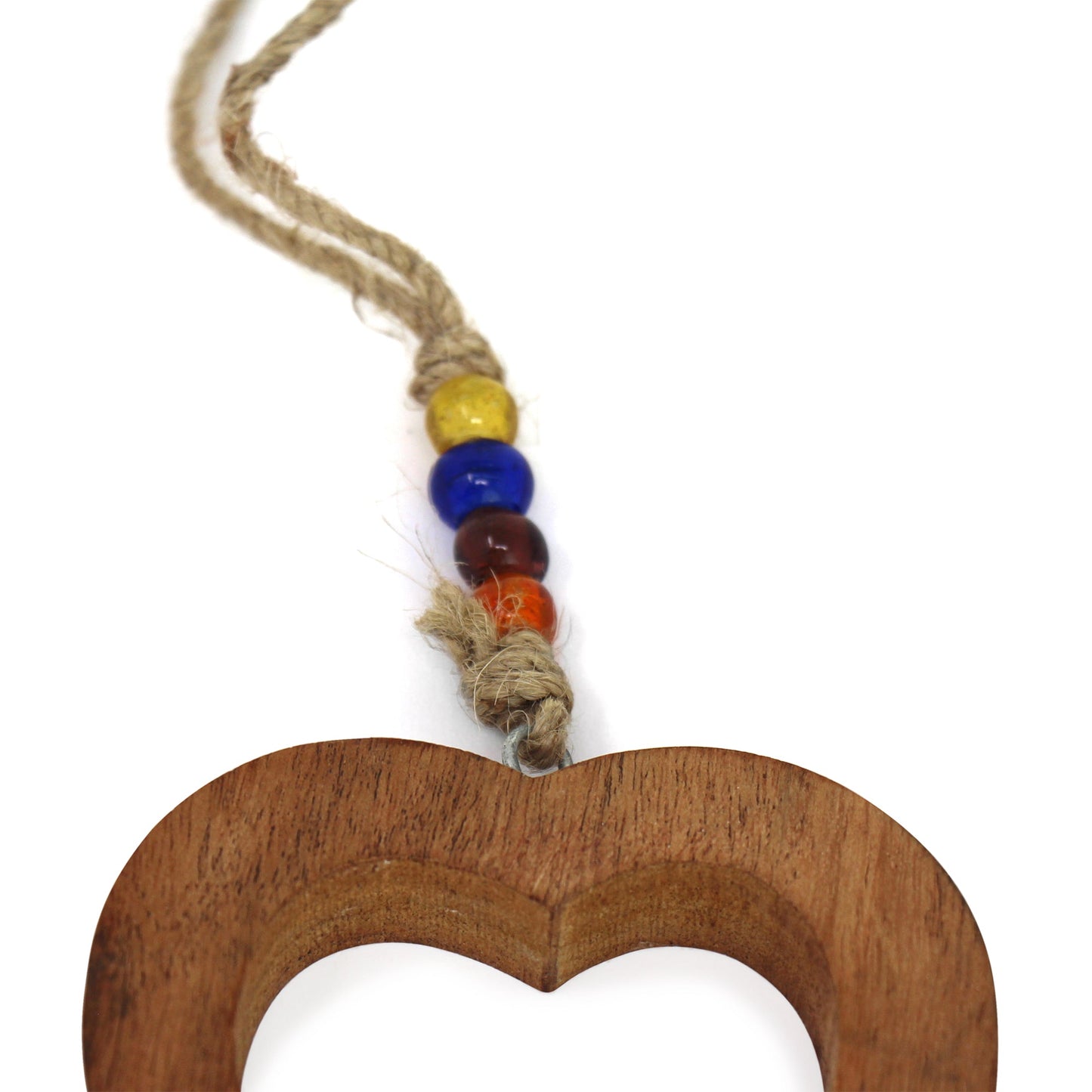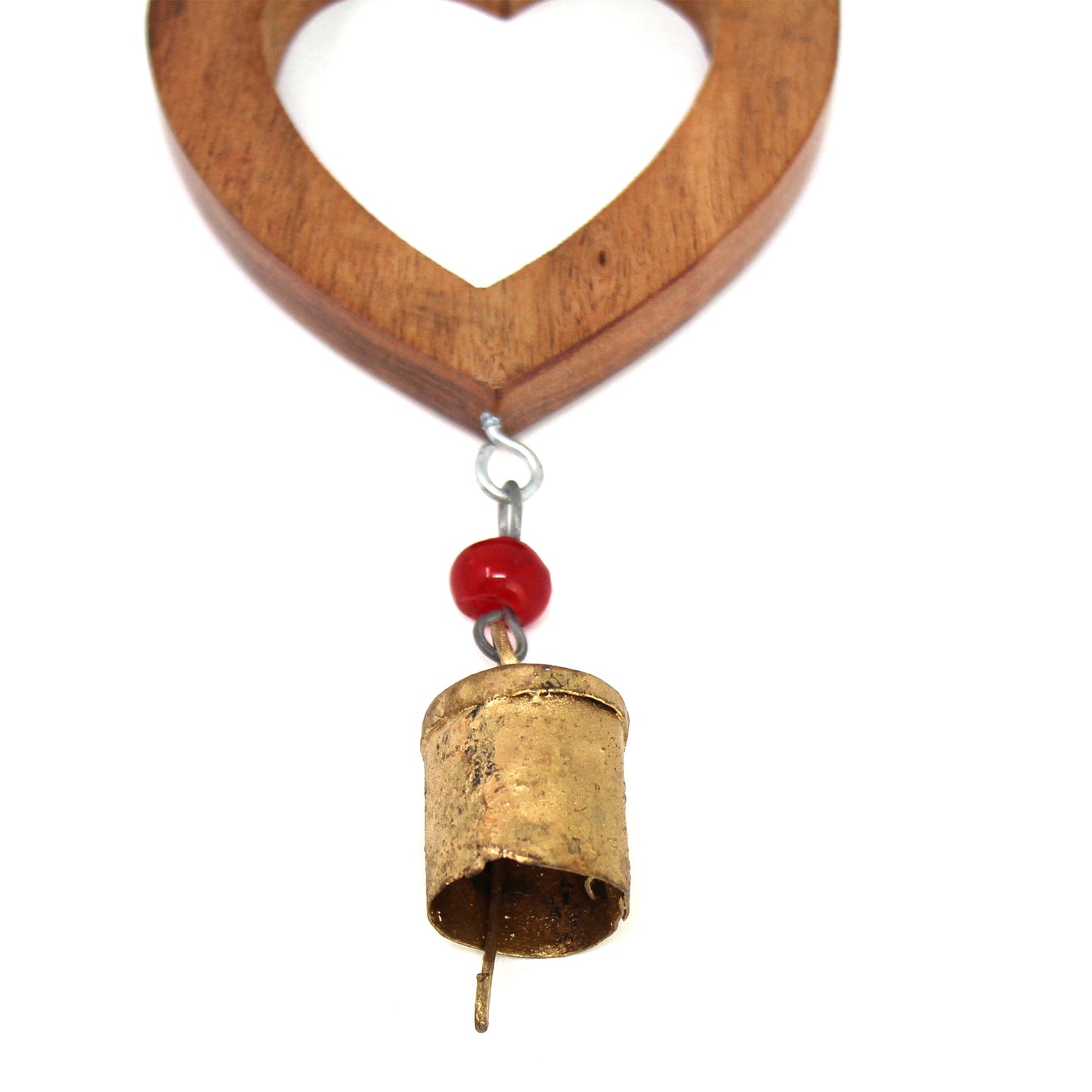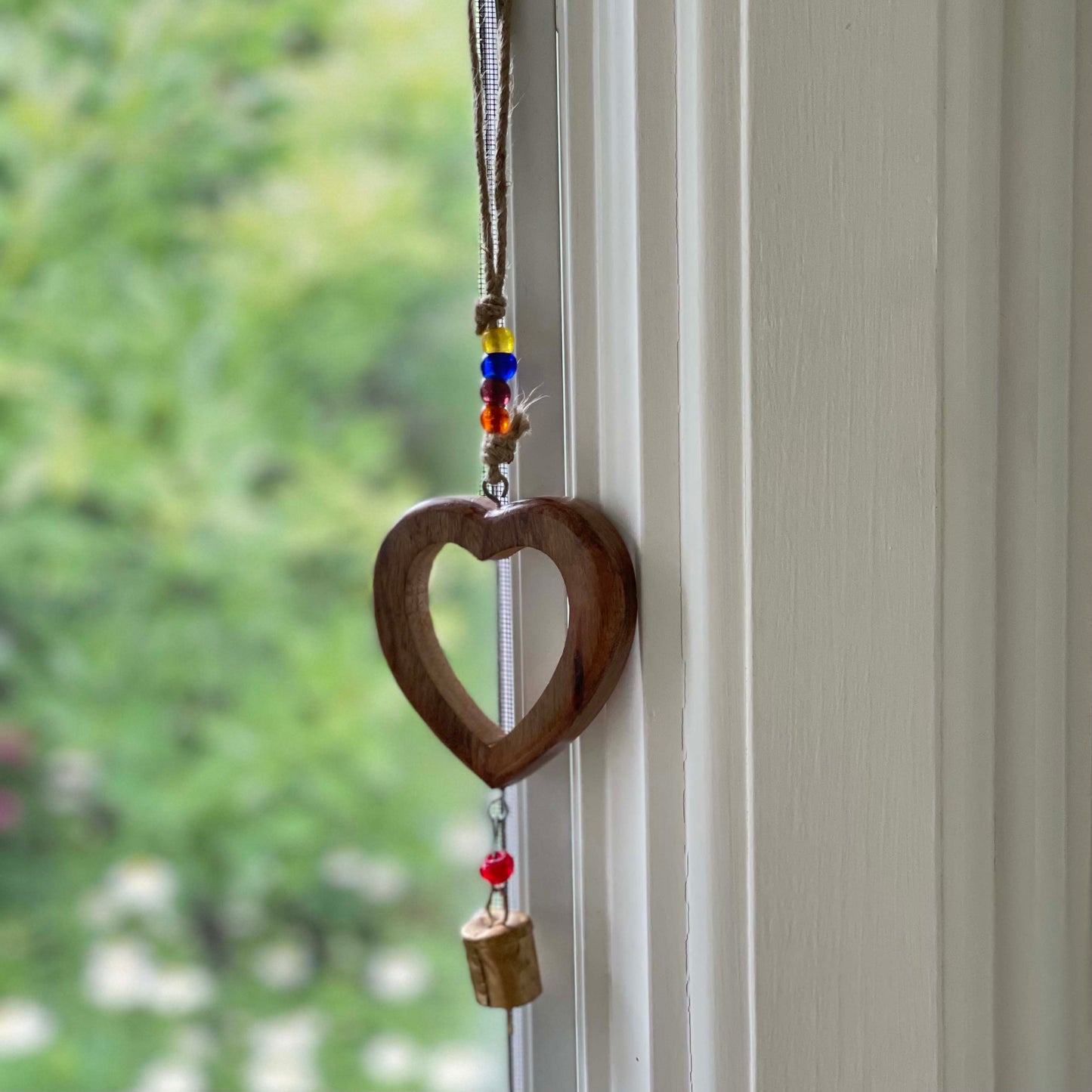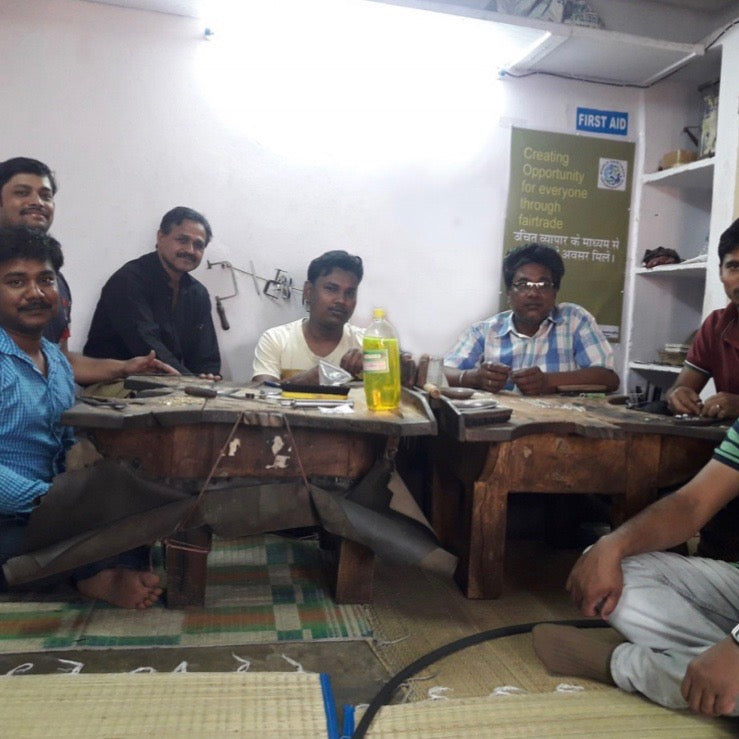Global Crafts
Handcrafted Wood Heart Chime with Recycled Iron Bell -Fair Trade - Behat, India
Handcrafted Wood Heart Chime with Recycled Iron Bell -Fair Trade - Behat, India
Couldn't load pickup availability
The heart chime is crafted from a mix of acacia wood and recycled iron and glass. This chime works well indoors or under a covered porch; perfect size to hang on a doorknob. Handmade by artisans at a family workshop in Behat, India, the metal working craft has been passed down from one generation to the next. The workshop was established in 1976 and employs the artisan family and well-trained artisans from the area.
Product Features:
- Type: Chime.
- Colors: Wood, Brass and colorful glass beads.
- Materials: Recycled iron and jute string.
- Dimensions: Approx. 12 inches from top to bottom and 4 inches wide.
- Wood heart is approximately 3.5 inches by 3.5 inches
- Cylinder bell is approximately 1 inch tall.
- Jute string for hanging.
Story Behind the Art:
The workshop buys sheets of scrap metal from dealers who collect it door-to-door. But don’t let that make you doubt the quality of their handicrafts; they ensure the scrap comes from acceptable material and transforms the trash into beautiful art. The artisans specialize in a particular type of finishing known as “Rasai”. This is when a layer of brass is added onto the wrought iron to give the products a rustic and crude appearance.
Due to the handmade nature, slight variations in size, color, shape, pattern, or other characteristics may be evident. Each piece is truly a unique work of art, lovingly crafted by hand.
Share
About the Artisans
About the Artisans
 Joyeria Semilla meaning Seed Jewelry is a small fair-trade workshop in the Andean town of Villa de Leyva, Colombia. Girasol Taborda, a local artisan and social entrepreneur, started the workshop in the mid-1990s.
Joyeria Semilla meaning Seed Jewelry is a small fair-trade workshop in the Andean town of Villa de Leyva, Colombia. Girasol Taborda, a local artisan and social entrepreneur, started the workshop in the mid-1990s.
Joyeria Semilla’s objective is three-folds; to create new jobs, revive Colombia's handicrafts sector and to motivate locals to better manage their natural resources. The organization works primarily with socially and economically disadvantaged youths, single mothers and people with disabilities in the area. The company offers free training in product design, technical training and marketing to new members. Joyeria Semilla has trained them in the craft of jewelry-making.

Caña Flecha or “Gynerium Sagittatum” is a locally found palm tree in the regions of the Caribbean coast. The leaves from this plant are used for making jewelry, woven hats, bags and baskets. The Zenú Indians were and their descendants inherited the tradition of picking veins of the green palm leaf for weaving. These veins were made into woven hats and other products for their personal use.
The Zenú culture is said to have existed between 200BC to1600AD. With the arrival of the colonizers in the 16th century, the indigenous community declined of unknown reasons. Today a very small population remains that claims the inheritance of the almost extinct Zenú tribe. Known for their skills in the construction of major waterworks, canals and irrigation system along with being skilled goldsmiths, examples of their accomplished craftsmanship are found in various museums around the world. Their larger means of subsistence were hunting, farming, fishing and trading.
Caña Flecha is found in abundance in the region, and hence makes for a sustainable and naturally available raw material for these products. Every bit of the plant is utilized – from using in building walls and roofs in houses to food for cattle and medicinal purposes. It is from the central vein of the leaf that the fibers for weaving are obtained. After the hard surface is peeled off, the fibers are left in the sun to dry and undergo a natural tinting process; these fibers are barely about 1 millimeter in thickness and hence call for a lot of skill and patience to weave with. The dried fibers are then processed for natural coloration - some are boiled with lemon to whiten them and some are treated with mud and boiled with plantain leaves to blacken them. The designs are based on ancient motifs and mathematical representations, which are inspired by the early Zenú culture.
